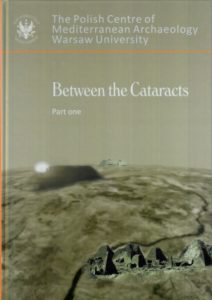-
BUY ONLINE SEE IN CEEOL
-
Between the Cataracts, Part One: Main Papers (=PAM Supplement Series 2.1), Warsaw: PCMA UW, University of Warsaw Press, 2008
Warsaw 2008
ISBN 978-83-235-0271-5
ISBN 978-83-235-3326-9 (online)
https://doi.org/10.31338/uw.9788323533269
340 pages
Hard coverThe scale of archaeological undertakings in Nubian archaeology in the past ten years and the sheer amount of new data that have been obtained, spanning Nubian heritage from the Paleolithic to the Funj Sultanate of Sinnar, have spurred a revision of many long-held views and a tackling of new perspectives in Ancient Nubian studies.
The Proceedings of the 11th International Conference of the Society of Nubian Studies in Warsaw bring a timely record of the newest research into the ancient history and archaeology of Nubia, the territories of the Nile Valley and the deserts south of the first cataract (i.e., southern Egypt and northern Sudan). The papers, published in two parts, cover diverse aspects of research from reports on recent excavations, through documentary studies and insightful analyses of Nubian society, architecture and art.
Part one, comprising papers by 17 researchers, scholars in Nubian Studies, constitutes a compact summary of long-term research on the main centers of Nubian civilization and a broader historical reflection, taking into account also the influence of external factors on the situation in Nubia. A review of the archaeological work and research conducted in 2002-2006 is provided by D.A. Welsby. Site overviews include Wadi Howar (F. Jesse), Dokki Gel (Ch. Bonnet, D. Valbelle), Tombos (S.T. Smith), Sedeinga (C. Berger-el Naggar), Gebel Barkal (A. Roccati), Musawwarat es Sufra (S. Wenig), Meroe (K. Grzymski), Qasr Ibrim (P. Rose), Dongola (S. Jakobielski)¸ Banganarti (B. Żurawski, A. Łajtar). Moreover, W.Y. Adams reviews current scholarship into Nubian society, L. Török discusses the rise of the segmentarian state, and C. Rilly proposes a revolutionary look at ethnicity in Nubia. W. Godlewski focuses on aspects of royal and episcopal iconography in Christian Nubian wall paintings. T. Kendall searches into the astronomical meaning of Gebel Barkal which prompted Taharka to locate his tomb site there.
For download:
